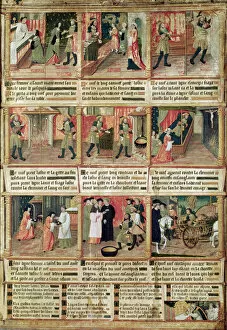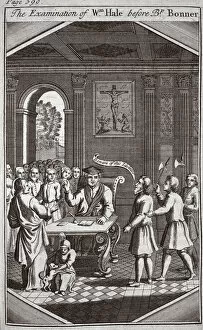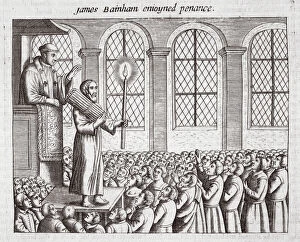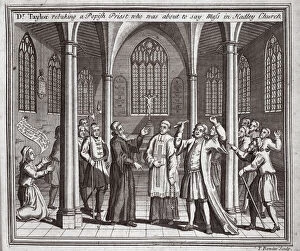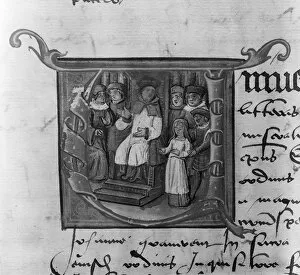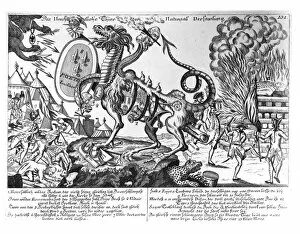Burnt At The Stake Collection
"Burnt at the Stake: A Dark Chapter in History Unveiled" In the depths of history
For sale as Licensed Images
Choose your image, Select your licence and Download the media
"Burnt at the Stake: A Dark Chapter in History Unveiled" In the depths of history, a haunting practice known as burning at the stake emerged as a brutal form of punishment and persecution. The Orleans Martyrs, depicted in an engraving from James Aitken Wylie's "The History of Protestantism, " serve as a chilling reminder of this gruesome method employed during religious conflicts. As we delve further into this macabre subject, we encounter various illustrations that shed light on different aspects surrounding burnings at the stake. An oil painting titled "Miracle of the Profanation of the Host" portrays another motive behind these executions – accusations related to religious desecration. Moving forward, we stumble upon an engraved bill heading depicting the Burning of the Templars. This image serves as evidence that not only heretics but also members of powerful organizations faced such horrifying fates. The drapers shop sign in Paris stands as a stark reminder that even those who were once revered could be condemned to flames. Further exploration reveals engravings showcasing cruelties practiced by schismatics in England and Inquisition Trials in Spain. These images provide glimpses into how individuals were subjected to unimaginable suffering due to their beliefs or perceived transgressions against established authorities. One particularly striking woodcut from John Foxe's "Acts and Monuments" depicts The Martyrdom of Sir John Oldcastle, Lord Cobham. This illustration immortalizes his tragic fate for challenging religious norms during tumultuous times. Francois Ravaillac's execution for assassinating King Henri IV is captured through an engraving dating back to 1610. While not directly related to religion, it highlights how burning at the stake was sometimes used as a means to punish political dissenters or criminals deemed threats to authority. The Spanish Inquisition emerges prominently within this collection; its dark legacy etched forever through engravings capturing its terrifying trials.

